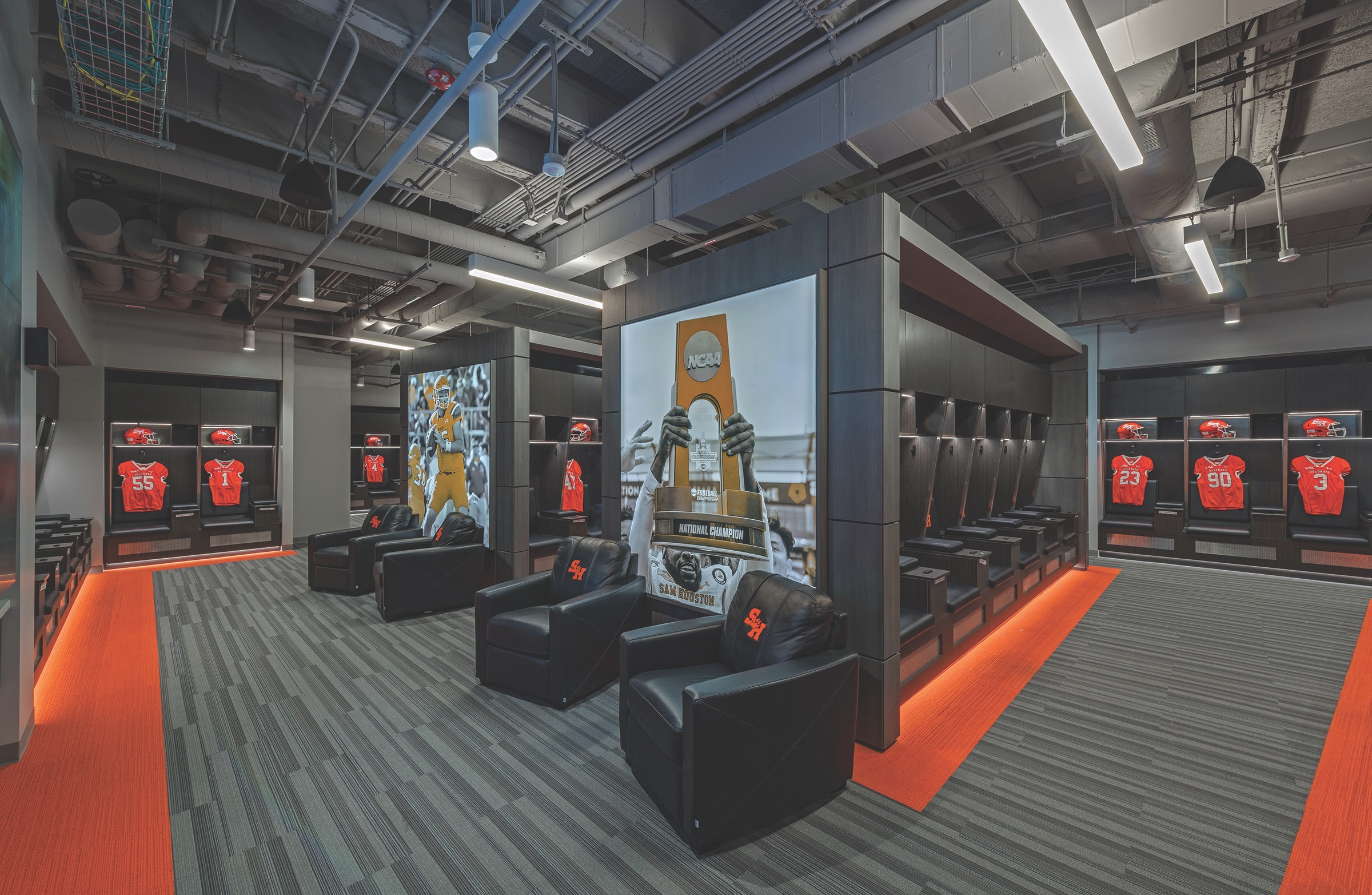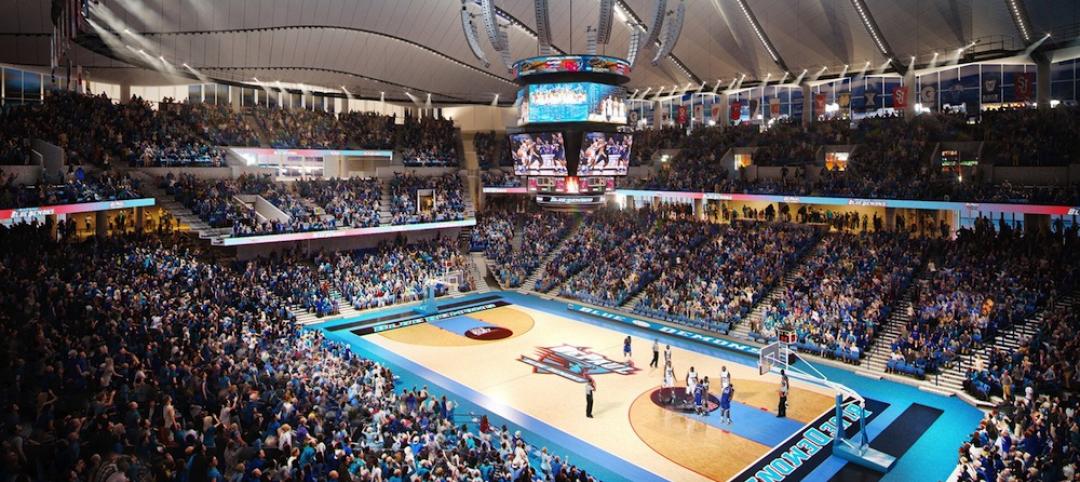Since July 1, 2021, student-athletes in most states have had the right to control the use of their names, images, and likenesses (NIL) for marketing and publicity purposes, and be compensated for that usage while maintaining their amateur status to continue playing for their college teams.
This change has led colleges and universities to strike NIL deals with businesses and advertisers, through which individual athletes can negotiate. Booster groups, like alumni associations, have also formed NIL Collectives that raise money from NIL agreements that is made available to students in exchange for using their persona. Sweeter deals can motivate student-athletes to transfer, which complicates teams’ recruiting and roster-building objectives.
NIL policies have raised expectations among student-athletes about the quality of sports training and performing facilities, in ways that present new design, renovation, and construction opportunities for AEC firms with sports practices.
“Schools’ facilities need to be more competitive, and find revenue-generating solutions,” says Sean Plunkett, Managing Principal with PBK Sports, a division of PRK Architects, which has pursued this avenue for higher ed business. He’s seeing more modifications to campus sports venues that create different experiences, such as pay tiers for seating, tailgating, and food and beverage.
On August 22, BD+C interviewed Plunkett and Melvin Robinson, who had recently joined PBK Sports as National Director of Sports Client Engagement. Robinson’s resume includes nearly 15 years with the University of Georgia Athletic Association, with stints as Director of Facilities and Assistant Athletic Director. They had just met with the coaches and staff of a major Big Ten state university, “where football matters,” says Plunkett.

Over the past decade, Robinson has watched college sports programs engage in a recruiting arms race, with their athletic facilities as weapons. “It started in the locker room: who has the best pool, the best barber shop? It has all been about flash and pop.” During this period, and especially over the past few years, he’s seen student-athletes evolve into “entrepreneurs,” which can add another layer of stress. College sports programming now includes health, wellness, and financial services to help their athletes handle the pressure.
Student-athletes, he says, have come to expect training facilities to resemble mini versions of ESPN. “You need digital spaces, technology, studios. Hollywood meets higher ed,” Robinson quips. And because college sports, especially football and basketball, are ubiquitous on TV and online platforms, their facilities often define the school’s image for student-athletes and their parents.
“The facilities are a big part of recruiting, enticing, and retaining athletes,” says Robinson.
The cost of new construction or renovation usually isn’t an impediment, says Plunkett, who notes that financing typically comes from ticket sales, donors, and vendors. To help its clients fill gaps in financing, PBK suggests things like seating values, and offering diverse fan experiences both inside and outside the stadium or arena.
Robinson observes that professional sports teams are generally more attentive to the comfort and convenience of their fans, whereas colleges are all about the players. However, pros’ training facilities are catching up. “NIL is leveling the playing field,“ says Robinson.
Related Stories
Sports and Recreational Facilities | Mar 25, 2016
Minnesota Timberwolves join pack of NBA teams with new high-res video screens
The Wolves, Charlotte Hornets, and Sacramento Kings have new multi-paneled center-hung displays planned for their arenas.
Sports and Recreational Facilities | Mar 24, 2016
Barcelona hoops arena will rattle opponents with wall of raucous fans
HOK and TAC Arquitectes designed a basketball palace that will have intimate seating inside and public space outside.
Sports and Recreational Facilities | Mar 18, 2016
Milwaukee Bucks reveal more renderings of new downtown arena project
The plan, led by Populous, includes a 714,000-sf arena and a 30-acre mixed-use development.
Sports and Recreational Facilities | Mar 14, 2016
Washington Redskins tease new stadium model designed by Bjarke Ingels
The location isn't yet determined, but the new stadium will have a moat for kayaking.
Events Facilities | Mar 7, 2016
Experts pessimistic on Chicago’s $650 million McCormick Place expansion
Developers and city officials envision $250 million of annual growth, but the figure assumes that a new arena will lure conventions and draw full houses for basketball games.
Industry Research | Feb 22, 2016
8 of the most interesting trends from Gensler’s Design Forecast 2016
Technology is running wild in Gensler’s 2016 forecast, as things like virtual reality, "smart" buildings and products, and fully connected online and offline worlds are making their presence felt throughout many of the future's top trends.
Game Changers | Feb 5, 2016
Mega surf parks take entertainment to new extremes
Wave-making technologies vie for attention, as surfing is shortlisted for 2020 Olympic Games.
Game Changers | Feb 4, 2016
GAME CHANGERS: 6 projects that rewrite the rules of commercial design and construction
BD+C’s inaugural Game Changers report highlights today’s pacesetting projects, from a prefab high-rise in China to a breakthrough research lab in the Midwest.
Sponsored | Sports and Recreational Facilities | Feb 3, 2016
New $96.5 million Ole Miss Basketball Arena Opened in January
The recently constructed basketball arena at Ole Miss, The Pavilion, exudes sophistication due to its spectacular curved roof coated with a vibrant Terra Cotta Fluropon.
Sports and Recreational Facilities | Jan 29, 2016
Billion-dollar dome in Las Vegas could be the Oakland Raiders next home
The franchise, which is considering relocation if it can’t work out a stadium deal in the Bay Area, is listening to a new stadium pitch from investors in Las Vegas, led by the Sands Corp.

















